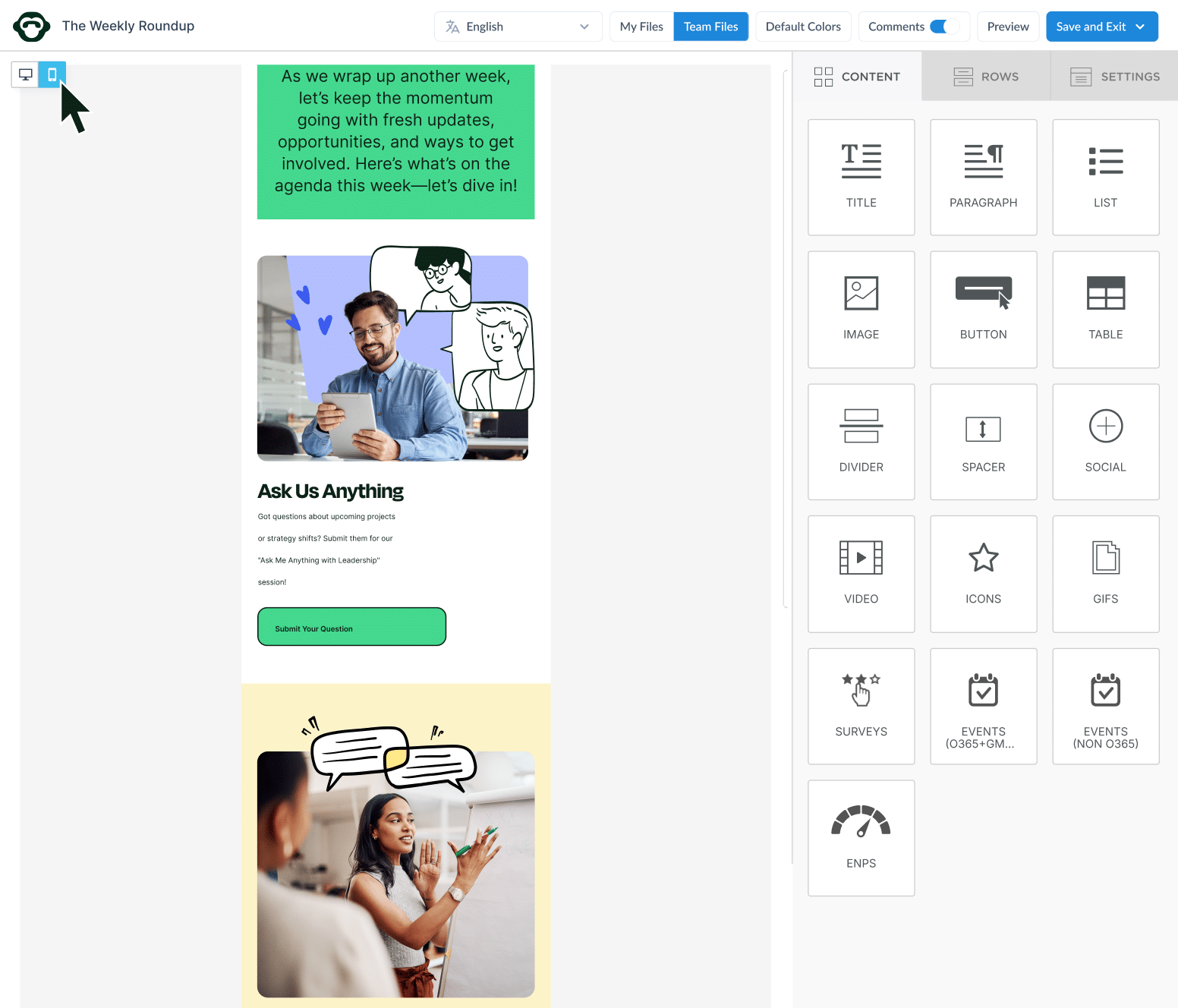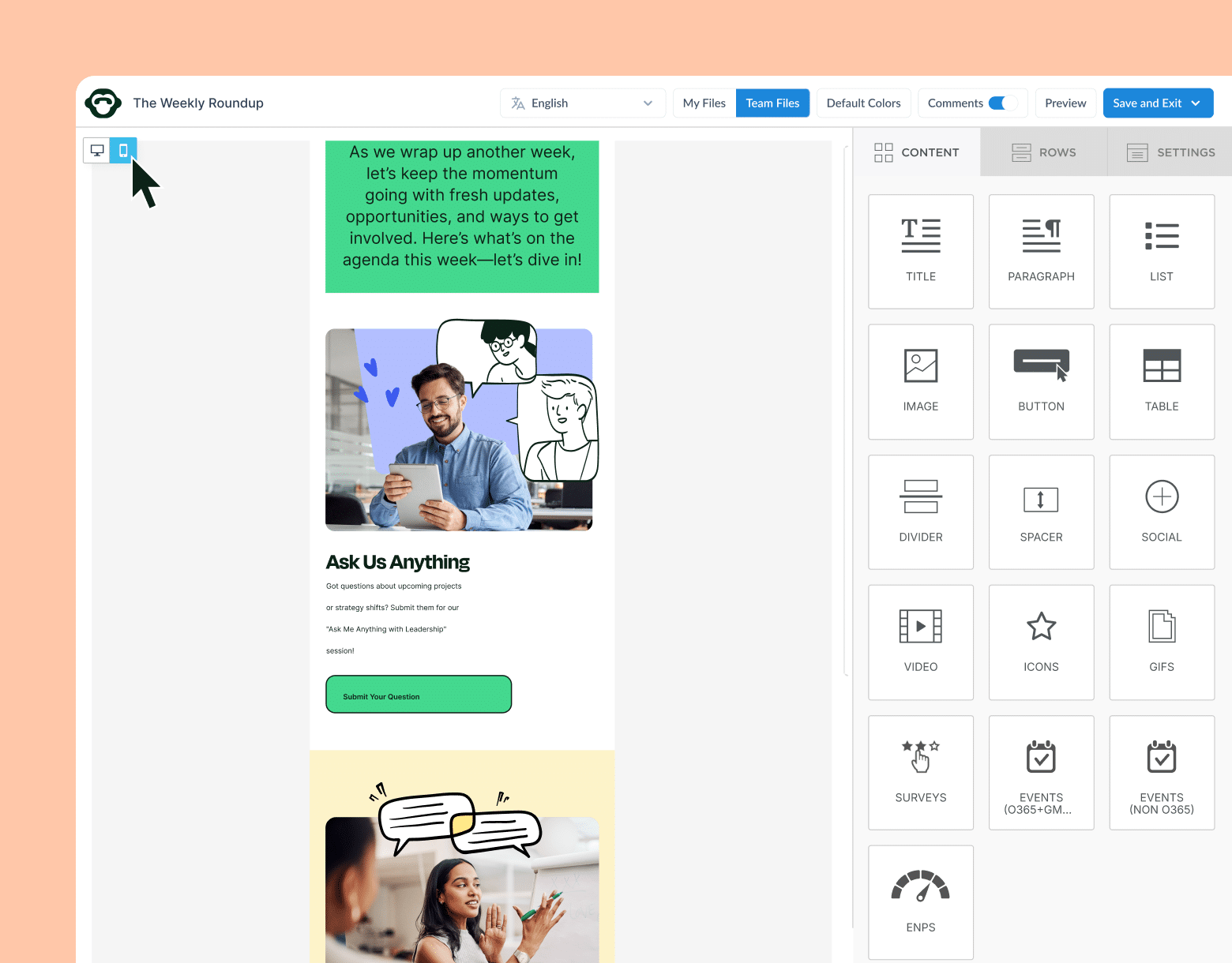In 2025, communicators are navigating AI, analytics, and executive scrutiny like never before. These 10 data-driven trends from our latest global survey reveal where the function is heading—and how to stay ahead.
In 2025, internal communications has reached a tipping point. From AI integration to mounting pressure from leadership to prove ROI, the role of internal communicators is expanding quickly.
Our 2025 Global State of Internal Communications Report surveyed over 450+ professionals to reveal the most urgent trends shaping communications.
In this post, we cover the 10 insights every internal communicator needs to know—backed by this year’s revealing GSIC data:
Take a self-guided tour of ContactMonkey
See how our key features can streamline your internal communications.
Take product tour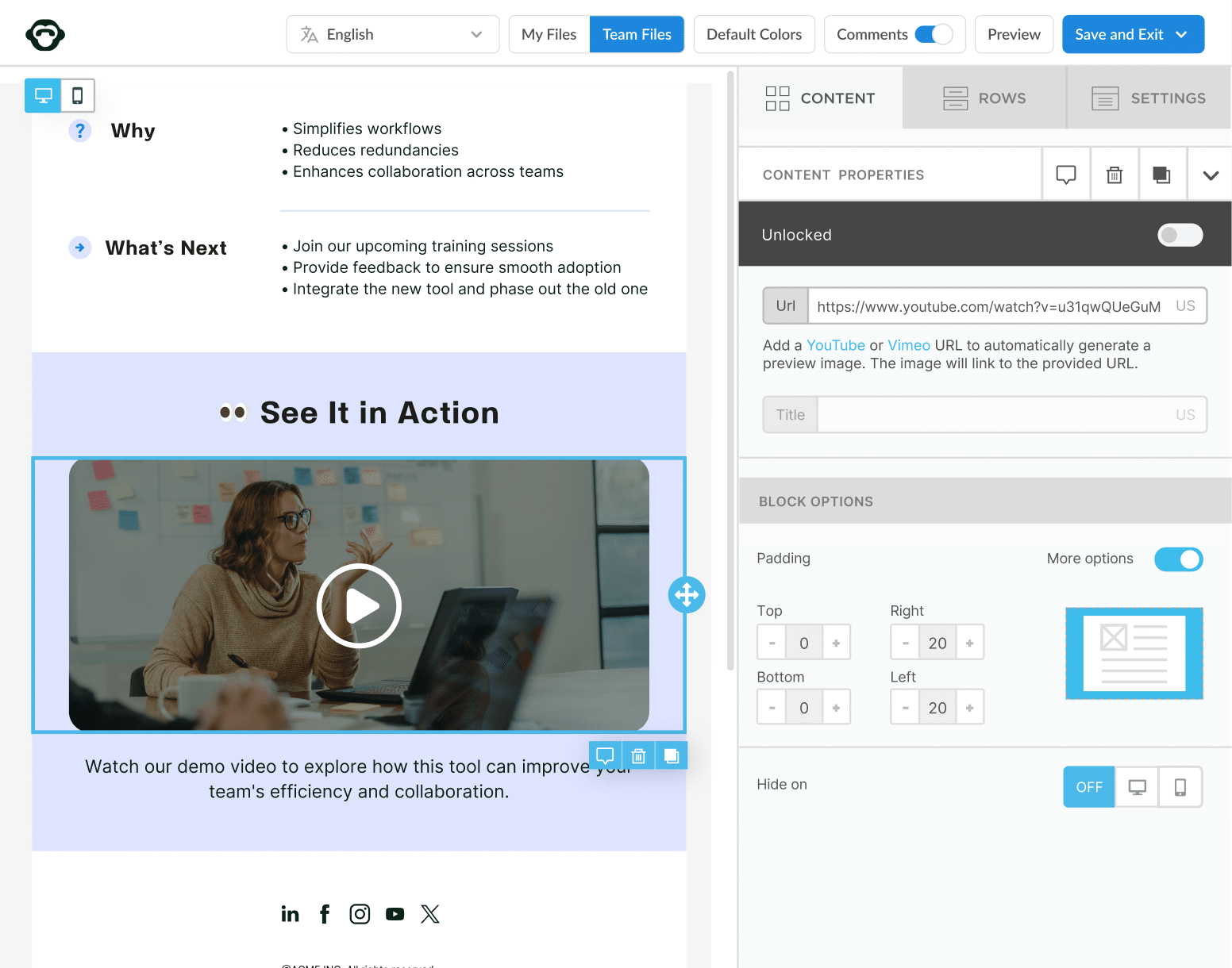
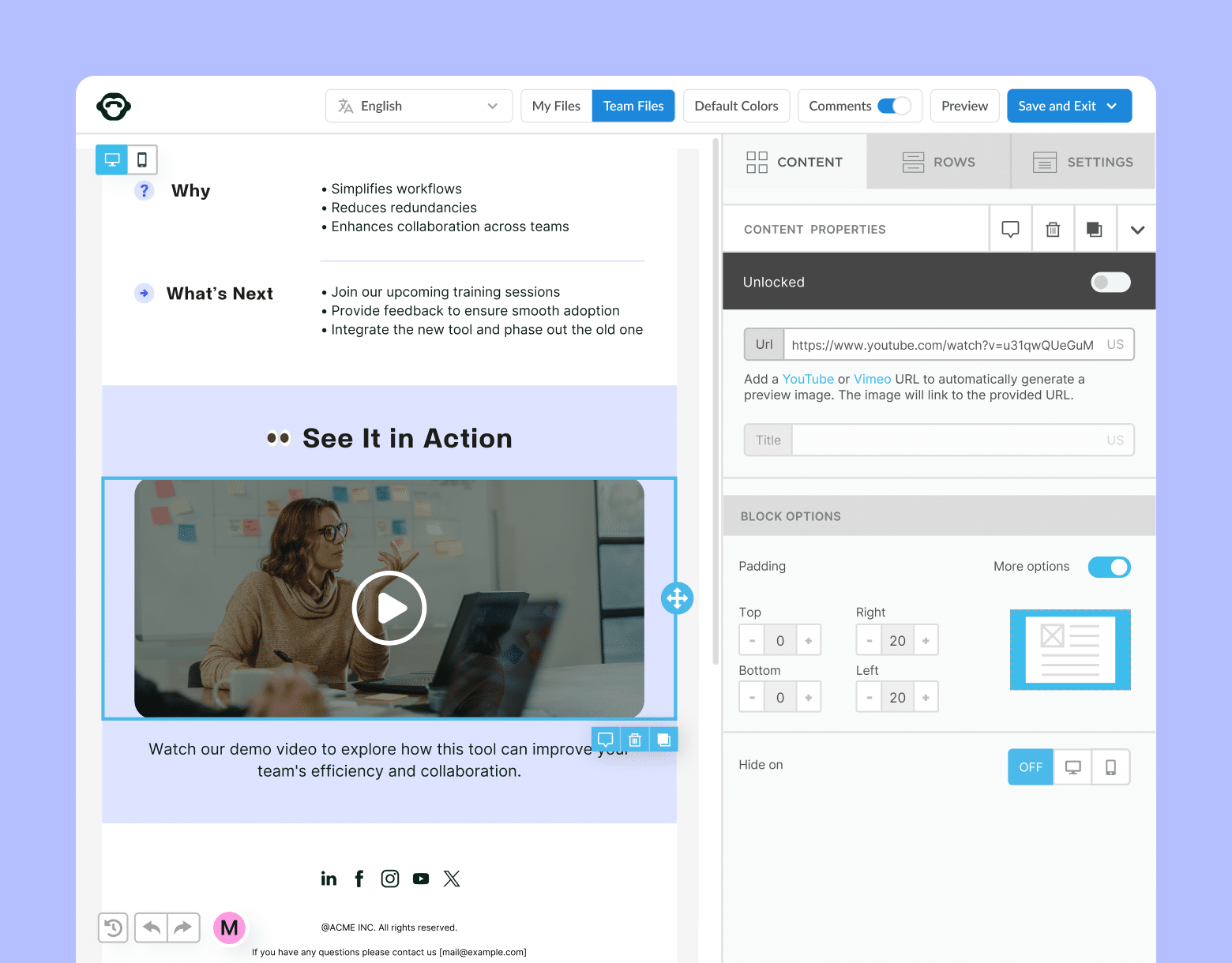
What’s Trending in IC This Year
This year’s data paints a clear picture: communicators are navigating more complexity, more responsibility, and more expectation than ever before.
These 10 trends reveal where internal comms is headed in 2025—and how you can lead the way:
1. AI adoption becomes widespread in internal comms
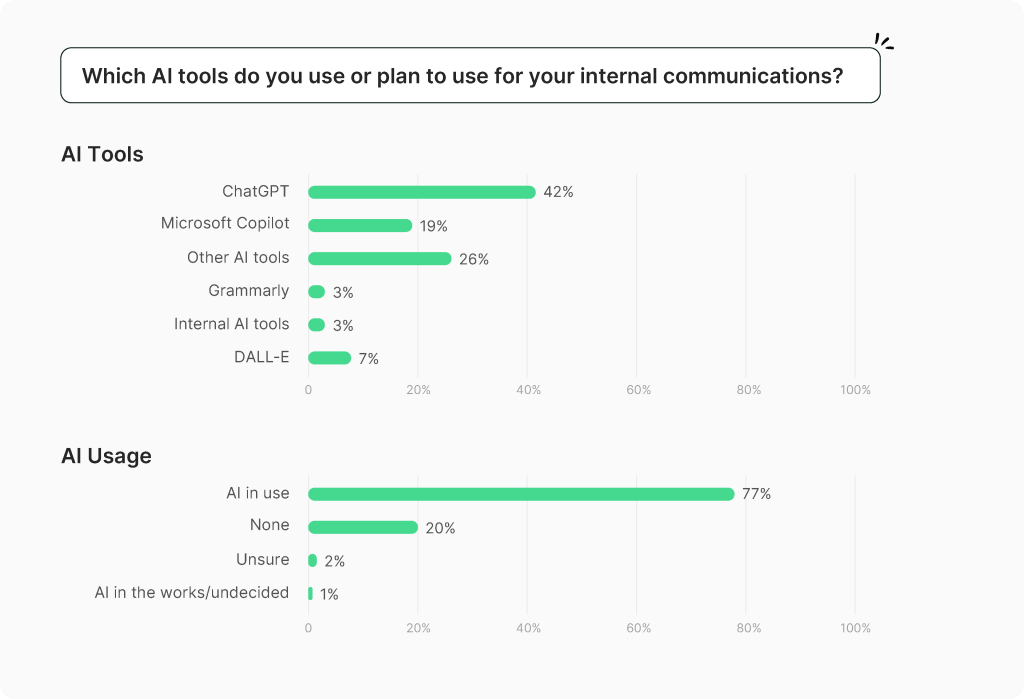
“77% of internal communicators are using AI tools like ChatGPT or Microsoft Copilot.”
The trend: This is the first time a majority of IC teams have fully integrated AI into their workflows. From writing employee updates to creating email templates, AI is helping communicators work faster, smarter, and more creatively.
Why you should care If AI isn’t yet part of your toolkit, 2025 is the year to start exploring. You don’t need to overhaul your strategy—just begin by testing AI-generated content and analytics for everyday comms.
2. Employee engagement stuck in the middle
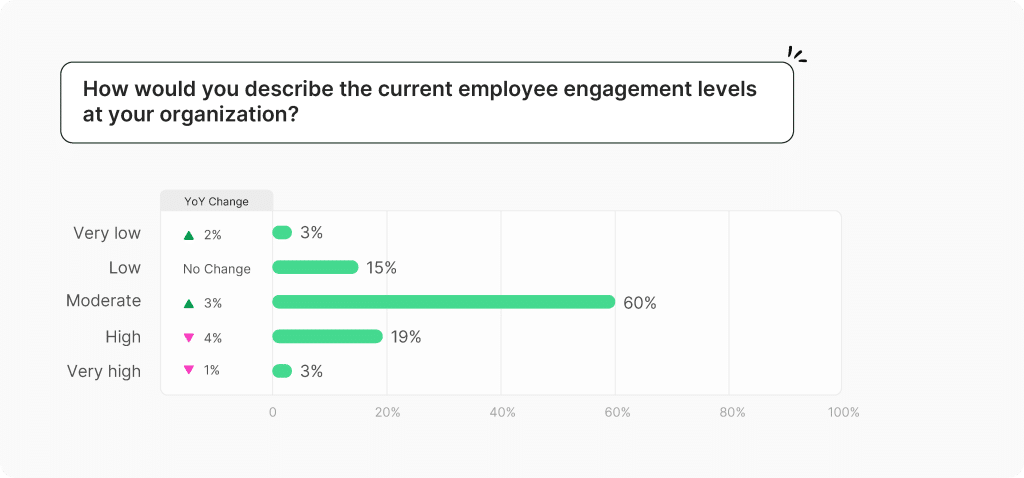
“60% of communicators rate employee engagement at their organizations as “moderate.”
The trend: Despite rising investments in employee experience, many teams are struggling to move the engagement needle. Hybrid work, burnout, and lack of recognition continue to drag scores down.
Why you should care: A targeted engagement strategy—one that includes recognition, leadership visibility, and feedback loops—is more important than ever.
3. Hybrid work models remain the norm
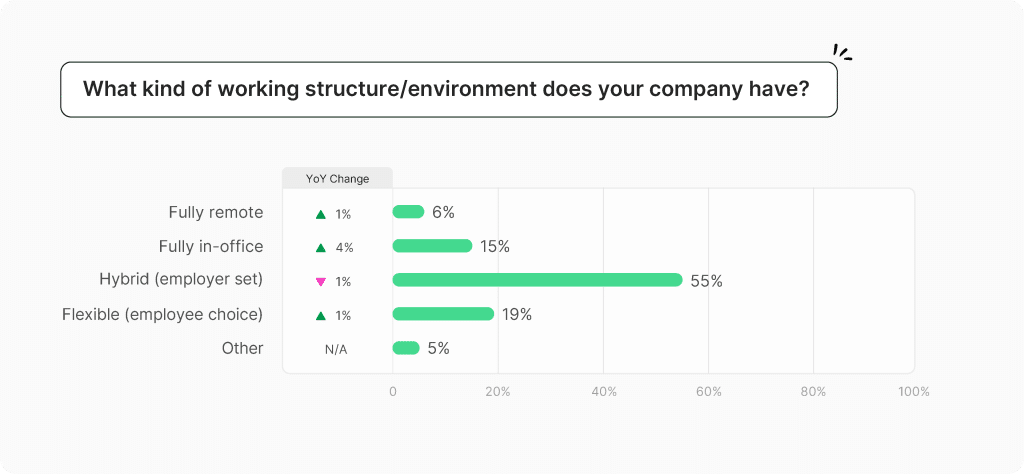
“80% of organizations now operate under hybrid, flexible, or remote structures.”
The trend: Work isn’t returning to how it used to be. Internal communicators must now reach employees who are rarely, if ever, in the same place at the same time.
Why you should care: Prioritize flexible, multi-channel communication strategies—email, SMS, surveys, and even video—to keep distributed teams informed and aligned.
Discover the Global State of Internal Communications in 2025
Get the latest data from our global report.
Get the guide

4. Measuring internal comms remains a top challenge
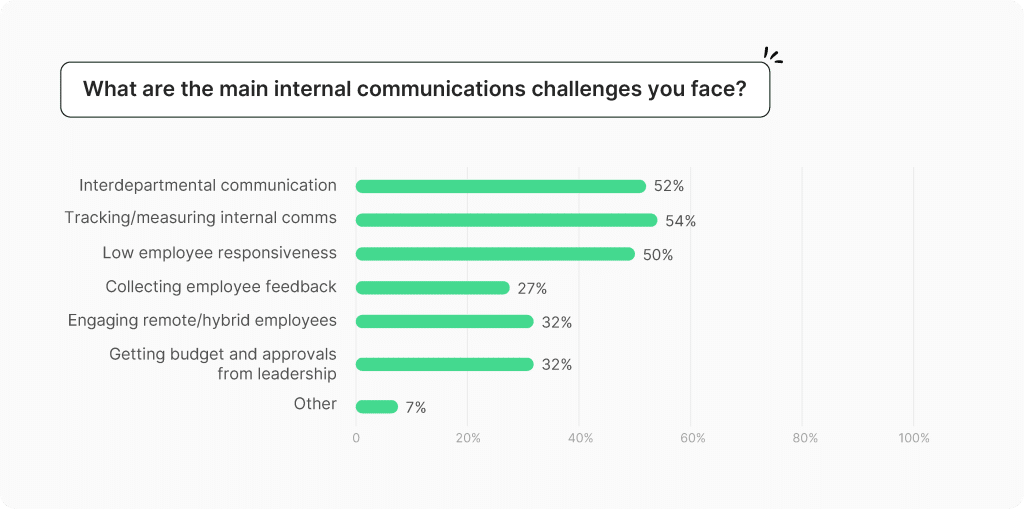
“54% of communicators report measurement as their biggest challenge; 70% struggle to prove ROI.”
The trend: Internal communications is becoming more strategic, but measurement tools haven’t caught up. Many communicators still rely on open rates alone.
Why you should care: Leverage internal email tools with built-in analytics (like ContactMonkey) to go beyond opens—track engagement, feedback, and even sentiment.
5. Crisis communication systems are underleveraged
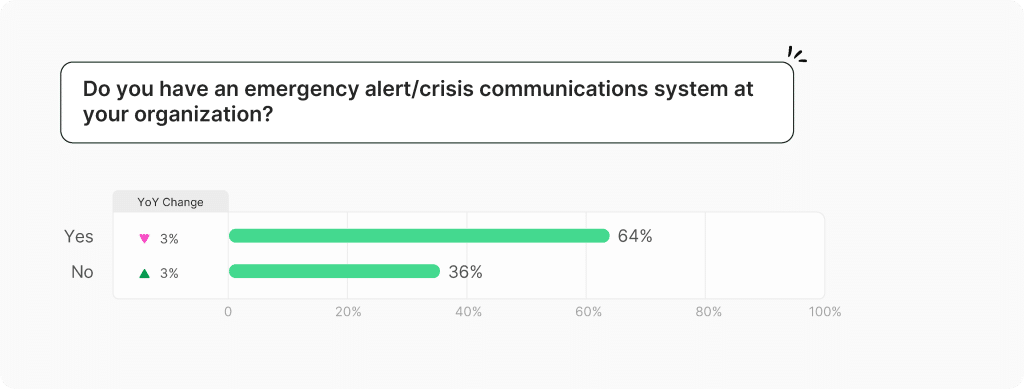
“Only 64% of organizations have a formal crisis communication system in place.”
The trend: In a world shaped by rapid change—from layoffs to inflation to political unrest—internal comms needs robust, agile crisis communication strategies.
Why you should care: Without a formal system in place, organizations risk confusion, rumors, and declining trust when crises hit. Strengthen your crisis communications now by investing in templates, training, and real-time communication tools.
6. DEI involvement is high, but efforts lack leadership support
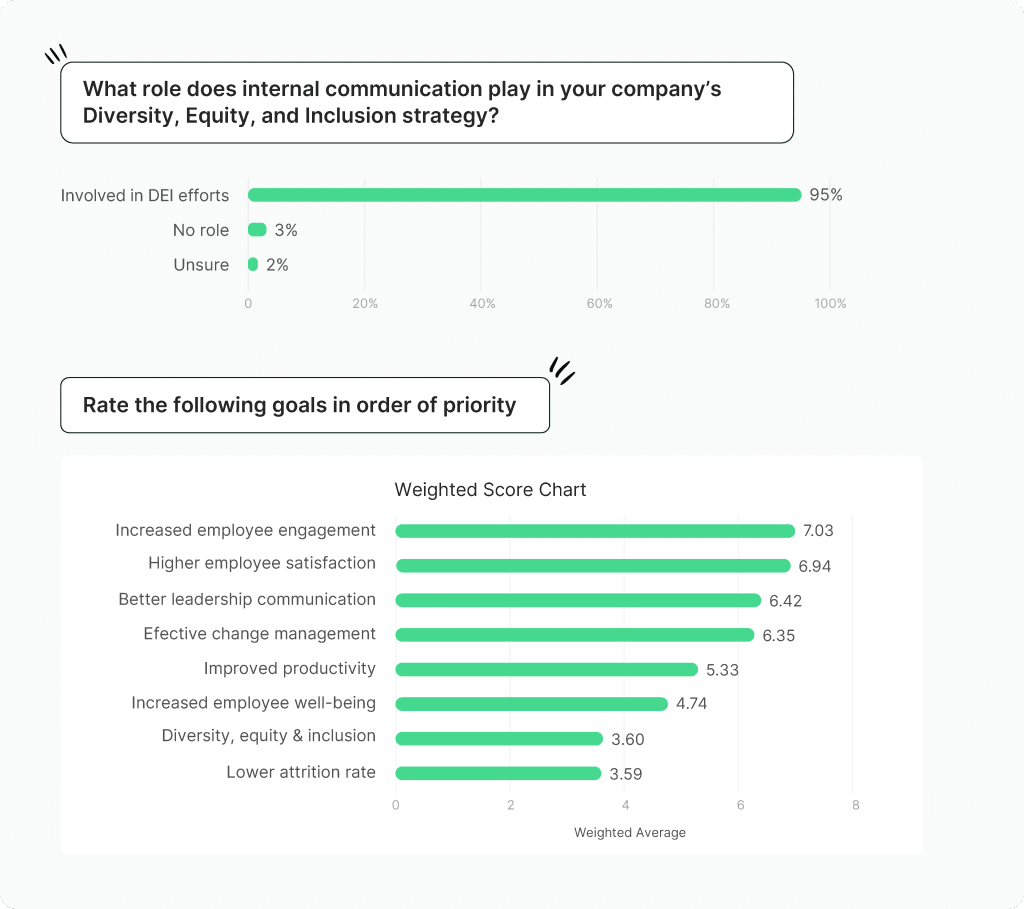
“95% of communicators are involved in DEI; though DEI ranks last among leadership priorities.”
The trend: IC teams are doing the work, but exec teams aren’t championing it. That creates a disconnect between messaging and perceived company values.
Why should you care: Frame DEI as a driver of retention, innovation, and trust to earn leadership buy-in and budget.
7. Internal comms is gaining strategic ground
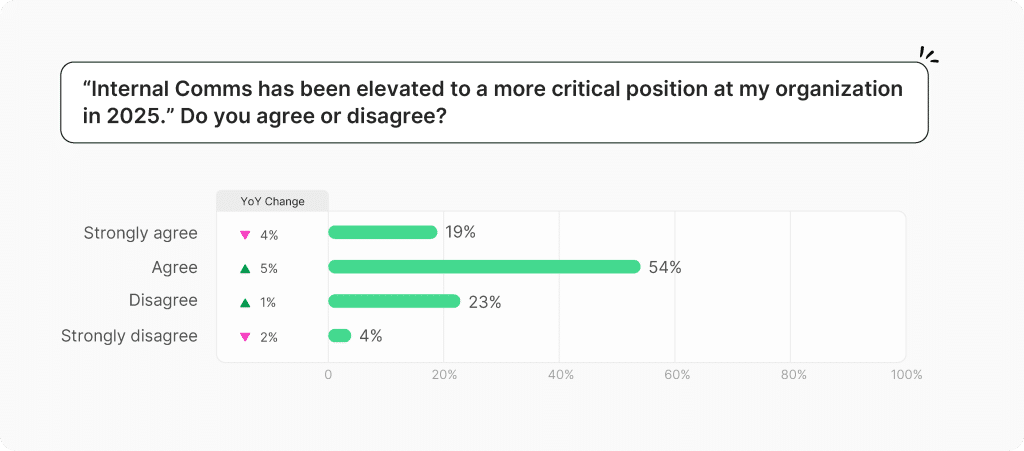
“72% of communicators report that their role has become more critical in the past year.”
The trend: This isn’t just anecdotal. Internal communicators are finally being recognized as business-critical players, especially when change, crisis, or culture are on the line.
Why you should care: Step up as a strategic advisor. Offer leadership insights on employee sentiment, propose messaging strategies, and drive top-down alignment through clear comms.
8. Email still dominates communication channels
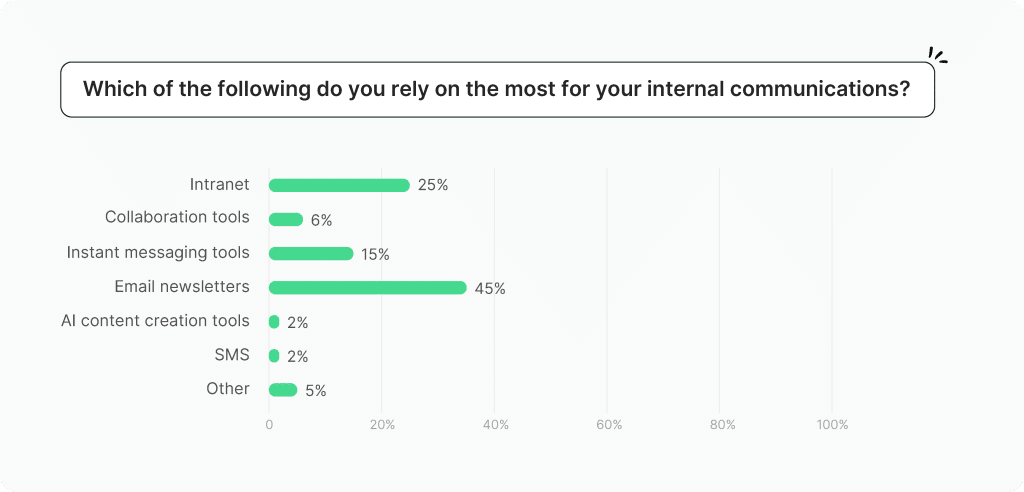
“74% of organizations are using email more frequently, with 45% relying heavily on newsletters.”
The trend: Despite all the Slack messages and video calls, email is still king—especially when it’s personalized, interactive, and mobile-friendly.
Why you should care: Rethink your email design. Use internal email tools like ContactMonkey to create responsive templates, embed feedback surveys, and track performance in real time.
9. Economic pressures are shaping messaging
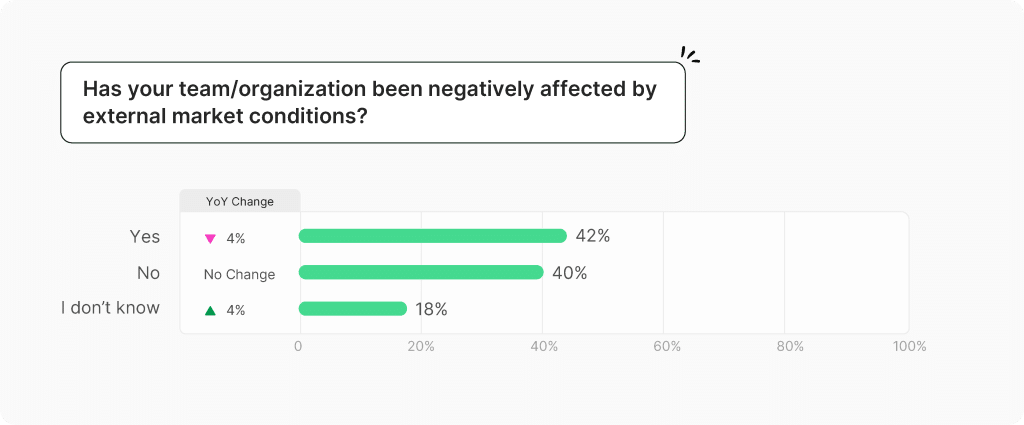
“42% of communicators report that external conditions, like inflation and layoffs, have impacted their IC strategy.”
The trend: In a climate of uncertainty, employees are looking to comms teams for clarity, stability, and reassurance.
Why you should care: Prepare your team with ready-to-send crisis comms templates and transparent messaging plans for sensitive topics.
10. Employee feedback loops are mainstream
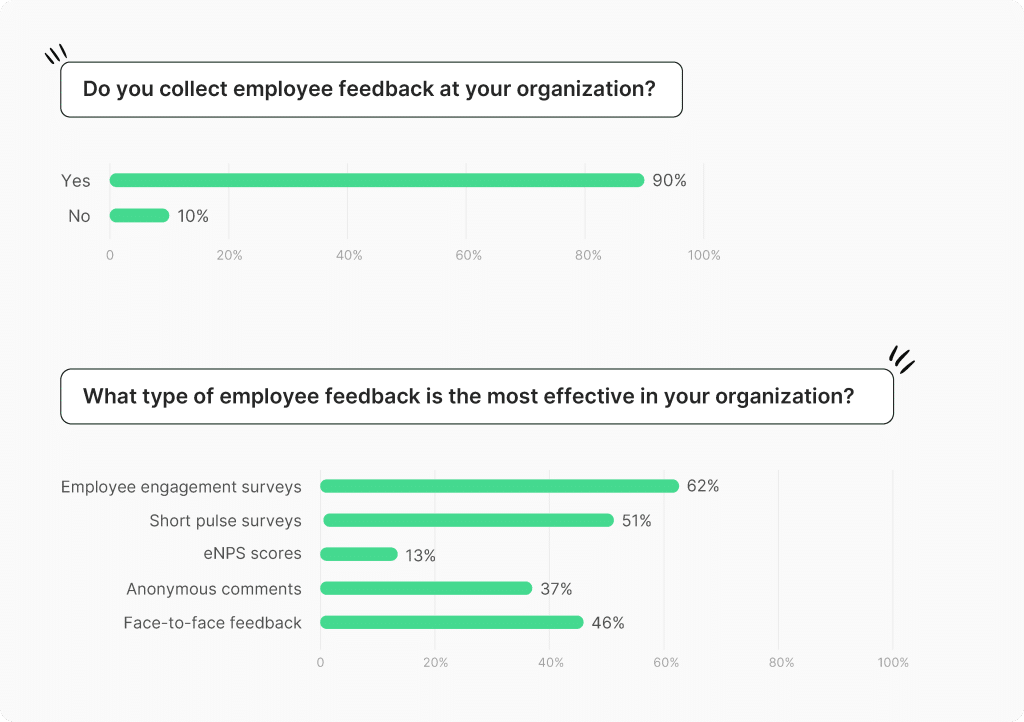
“90% of organizations collect employee feedback and employee engagement surveys are most effective.”
The trend: Listening is no longer optional. Frequent feedback collection builds trust, uncovers blind spots, and informs smarter strategy.
Why you should care: Embed pulse surveys directly in your emails. Use the data to adapt messaging and share “You Said, We Did” updates to close the loop.
Where IC Stands: Communicators Are Now Culture Leaders
If 2024 was the year of change, 2025 should be the year of strategic action. Internal communications is becoming a leadership function, not just a messaging role. With AI accelerating workflows, email driving consistent engagement, and data setting the pace, communicators have more power—and responsibility—than ever.
Ready to future-proof your internal comms? The landscape is changing fast—and your internal communication strategy needs to keep up. Book a 15-minute call to see how ContactMonkey can help you adapt.
